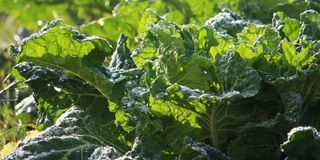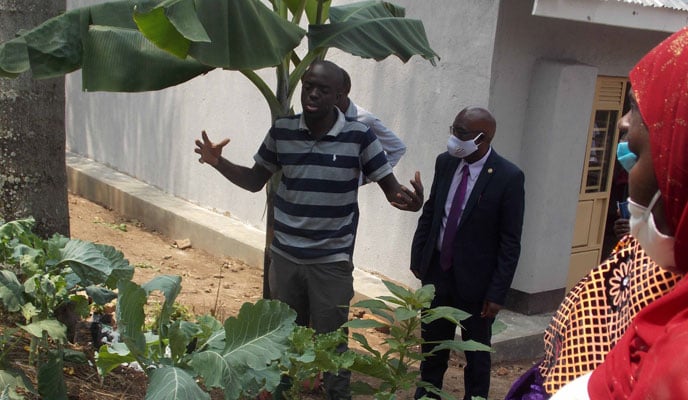Agronomy: Tips for planting sukuma wiki this season

Sukuma wiki matures after 60 days. photo/file
What you need to know:
When preparing the land for growing sukuma wiki, make sure the ploughing is deep, allowing for faster and better root development. Remove any perennial weeds before planting.
The English name for sukuma wiki is Collard Greens. It is a form of a cabbage where green leaves do not form a head. Closer to the wild cabbage, than the domesticated cabbage, Collard Greens is common in East Africa and is cultivated by 80 percent of small scale farmers. Sukuma wiki is rich in beta carotene, vitamin K, vitamin C, lutein, zeaxanthin, roughage, iron and calcium. It is mostly fried alone or with a mixture of other vegetables, especially onion and tomatoes.
Farming Collard Greens is profitable because it is consumed by nearly every household, at least once a week. It takes a short time to mature and most varieties can be harvested several times before the need to plant again.
Varieties of sukuma wiki
Mfalme F1 sukuma wiki
Mfalme F1, by East African seeds company, has a long harvesting period, and the leaves are not acidic when cooked, making it a preferred choice among people with ulcers. It has short spaces between the nodes, developing many leaves per internode. Mfalme F1 can tolerate some pests and diseases. It is ready for harvest between 45 to 60 days and can be harvested throughout one year after the first harvest
Thousand headed
Compared to other varieties of sukuma wiki, the thousand headed variety has smaller leaves but is loved because of its long harvesting period. It produces many heads, making it yield more leaves. Thousand headed sukuma wiki is usually ready for harvest 60 days after planting. It has very good heat tolerance.
Sukuma siku hybrid
With good tolerance to the diamond black moth, the sukuma siku hybrid yields curled soft leaves, with good flavour and can be harvested for between six and nine months after the first harvest.
Marrow stem
The marrow stem sukuma wiki is good for cooler climate, with a good distribution of rainfall. It produces dark green leaves.
Ecological requirements
Sukuma wiki can grow nearly in any climatic condition, provided water is available. It best performs at altitudes of between 800m to 2200 above sea level. The optimum temperature range is between 17 degrees Celsius and 22 degrees Celsius. Sukuma wiki requires at least six hours of direct sunlight. For optimum yield, Sukuma wiki requires enough water during its growing period. Well distributed rainfall of 350-500mm is ideal. The best soils for growing Sukuma wiki are those that are well-drained and rich in organic matter. The ideal pH should be between 5.5 and 7.0.
Higher levels of pH make manganese unavailable to the plant, leading to yellowing of leaves.
Yields
Sukuma wiki will yield about 8000 kilogrammes per acre, under good management practices.
Land preparation
When preparing the land for growing sukuma wiki, make sure the ploughing is deep, allowing for faster and better root development. Remove any perennial weeds before planting. Prepare the land early enough so as to expose the soil to pests to sunlight and birds. The birds will eat the pests. Sunlight will kill some of the pests.
Nursery preparation
You can sow sukuma wiki seeds on open nursery or seedling trays. When sowing sukuma wiki seeds in open field nursery, establish the nursery where the plants from the same vegetable family have not been planted for two years.
Make the nursery about one metre wide. This will allow you to take care of the seedlings without having to step onto the nursery. The length of the nursery can be as long as desired. If you are sowing in an area with heavy rainfall or heavy soils, it is recommended that you raise the nursery bed in order to prevent waterlogging.
Mix well-decomposed manure and DAP fertiliser with the soil in the nursery. Phosphorus helps in good root development while the manure improves soil structure and moisture retention. In the nursery, prepare drills across the beds at a spacing of 10 to 15 centimetres apart and two centimetres deep. Sow the seeds thinly and cover lightly with soil. Cover the bed with a thin layer of mulch, to avoid unearthing of the seeds. The mulch can be removed after germination. If growing in hot areas, make a shed of one metre high.
Transplanting
Transplant the seedlings when they have four to five true roots. The Collard Greens seedlings will be about four weeks old. Harden the seedlings by reducing the amount of water given, one week to the transplanting day. The best time to transplant sukuma wiki is in the morning or evenings when the sun is not hot. It is advisable only to transplant the strong healthy seedlings.
Spacing
The spacing for sukuma wiki depends on the size of the leaves/head. The recommended spacing for sukuma wiki is:
•30 by 30 centimetres for small sukuma wiki with small leaves
•60 by 45 centimetres for sukuma wiki with medium-sized leaves
•60 by 60 centimetres for sukuma wiki with large leaves
Mulching
Mulching for sukuma wiki is encouraged in order to prevent loss of soil moisture, soil erosion, and growth of weeds.
Weed control
Weeds will be detrimental to sukuma wiki and affect your yield, as they compete for nutrients and water with the sukuma wiki plants. Manual or semi-mechanical weeding can be done to remove the weeds. When weeding, do it in a shallow manner in order to avoid injuring the sukuma wiki leaves.
Harvesting
Within four weeks after transplanting, meaning about eight weeks after planting the seeds, sukuma wiki will be ready for harvest. It is done when the leaves are the size of your hand.
Sukuma wiki harvesting is done manually, by handpicking. Handle the leaves with care, to avoid bruises. Only harvest the outer leaves, so that you can continue harvesting as new leaves develop.
Sukuma wiki leaves can be stored seven-10 days under refrigeration and longer if cooked and frozen. Most farmers harvest and take to the market on the same day, to avoid the need for refrigeration.




